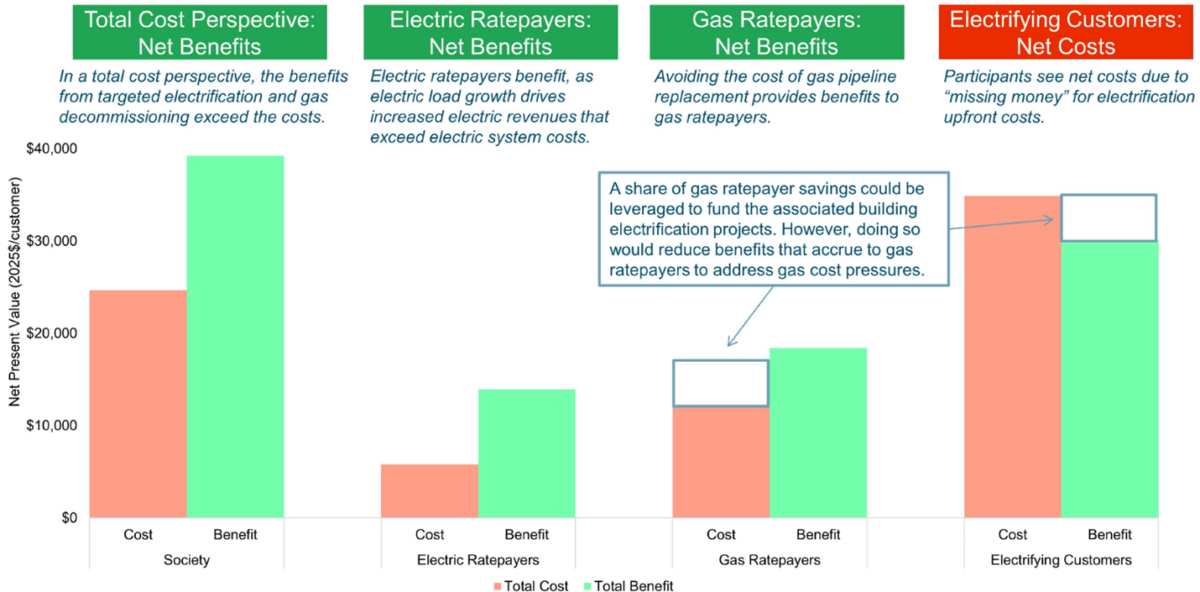
In new CEC-funded research, E3 developed a benefit-cost analysis framework for targeted electrification and gas decommissioning. We used this framework to evaluate 11 candidate sites in the East Bay region of the San Francisco Bay Area, considering participant, ratepayer, and societal perspectives. This analysis integrates site-specific estimates of gas infrastructure avoided costs into the cost-effectiveness framework, as well as monthly energy consumption and utility bill data from 1,500 customers, enabling a detailed examination of specific example projects. The study’s findings are applicable to future evaluations of gas decommissioning projects and for the broader development of a managed transition for California’s gas system.
The approach of targeted electrification and gas decommissioning is evaluated for sites where the cost of a gas main and service replacement project could be avoided. Current pipeline replacement rates set a practical upper bound for the scale of targeted electrification and gas decommissioning under the current regulatory framework, which we estimate to be about 10% of PG&E’s gas service territory through 2045. Although this reflects a relatively small share of total distribution main miles, pipeline replacement projects represent a large share of anticipated capital expenditures over the coming decades. Thus, targeted electrification and gas decommissioning projects could reflect an important opportunity to support a managed transition for California’s gas system by reducing costs for remaining gas customers.
We find that all 11 modeled projects see net benefits from a lifecycle total cost perspective. This indicates that, if these projects can be successfully implemented, they can help support a managed transition for the gas system.
In addition, we find that targeted electrification projects will likely be more cost-effective in less dense sites, i.e., sites with fewer customers per mile of gas main. These 11 candidate sites are much denser than PG&E’s service territory on average, indicating that projects in other regions of California could be more cost-effective than the sites we modeled.
Although these projects show net benefits overall, we find that participants will face a significant funding gap for the upfront costs of building electrification, even after accounting for existing federal, state, and utility incentives. One potential option to address the funding gap would be to repurpose the savings from avoided gas pipeline replacement to fund the associated building electrification projects. However, this funding approach would reduce the savings available to gas ratepayers to mitigate long-term gas cost pressures, potentially undermining the long-term equity goal of alleviating gas rate pressures for low- and middle-income gas customers and renters.
The E3-led project team completed this research under a grant from the California Energy Commission to explore targeted building electrification and gas system decommissioning in Northern California. The project team includes E3, Ava Community Energy (formerly East Bay Community Energy), and Gridworks. Pacific Gas and Electric Company (PG&E) supported the team with gas system data and gas engineering expertise.
In a prior report, we described the development and implementation of a site selection framework for targeted electrification and gas decommissioning, leading to the identification of 11 candidate sites in Ava Community Energy’s service territory.
The full report detailing the benefit-cost analysis framework is now available.



